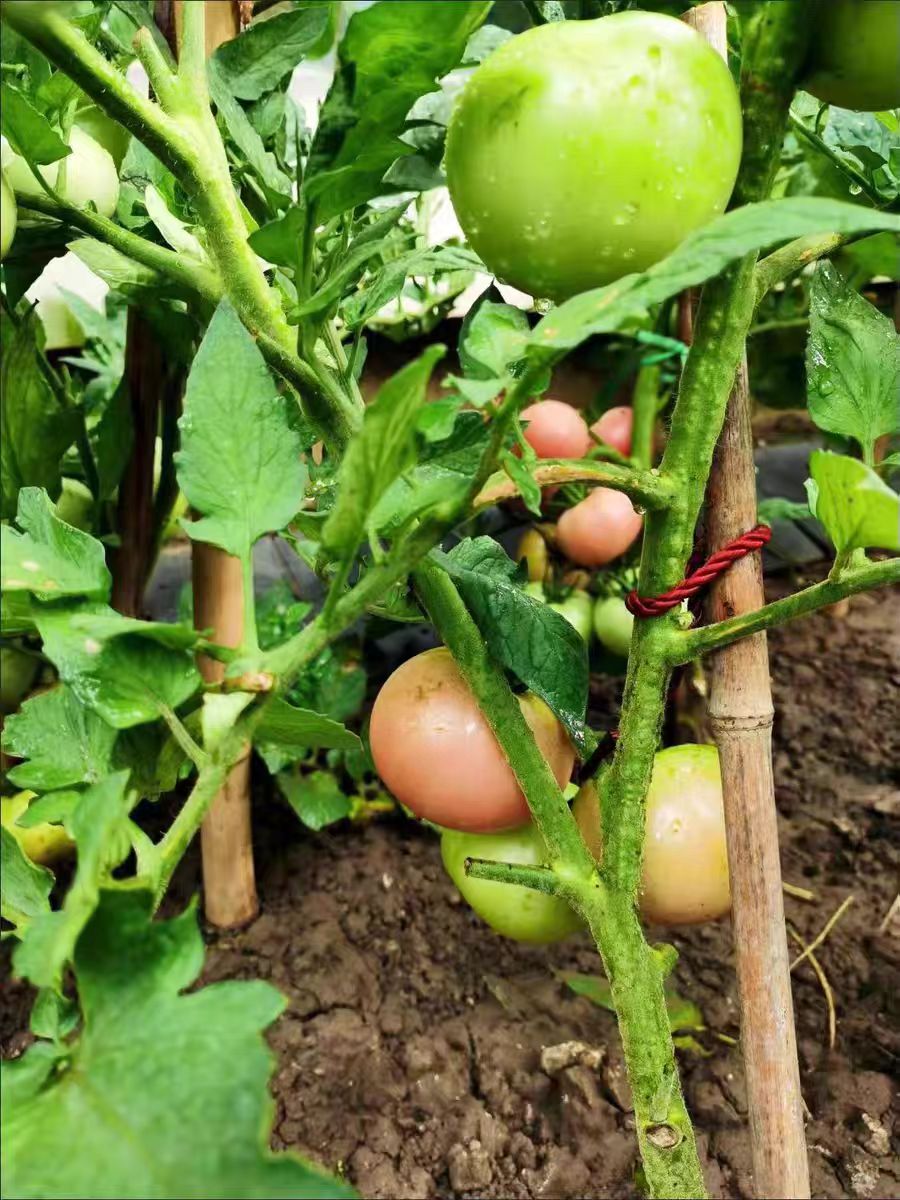Many people are unsure whether the Transparent Heart Red Tomato can only be planted in the open air when selecting tomato varieties. In fact, its planting methods are very flexible, mainly depending on the local climate, available facilities, and your planting goals—such as whether you prefer natural growth or want to grow them out of season for better prices. There are mainly two methods: open-air planting and greenhouse/polytunnel planting.
Open-Air Planting
This method has many advantages. The open-air environment provides ample sunlight and a large temperature difference between day and night, which helps tomatoes accumulate more sweetness, resulting in a better taste and vibrant color. Additionally, it has relatively lower costs, making it suitable for areas with warm, sunny climates year-round, mild winters, and a long frost-free period, as well as for farmers who prefer traditional planting methods. However, open-air planting relies heavily on weather conditions. In case of heavy rains, typhoons, or consecutive cloudy days, extra precautions are needed, such as digging drainage ditches in advance, setting up windproof supports, and regularly checking for pests and diseases.
Greenhouse/Polytunnel Planting (Protected Cultivation)
The biggest advantage of this method is the ability to control temperature, humidity, and light. Regardless of extreme weather like cold winters or hot summers, it can create a comfortable growth environment for tomatoes, allowing them to ripen earlier or later and be marketed when tomatoes are scarce for higher prices. For example, greenhouses are ideal for northern regions with extremely cold winters or southern regions with hot, rainy summers. However, it is important to ventilate regularly to prevent excessive humidity inside the greenhouse and use shade nets to block intense sunlight during hot summer days.
Optimal Planting Timing
This mainly depends on local temperatures and the chosen planting method.
Open-Air Planting: Plant when the weather is warm and stable, after the last frost. Sowing times vary by region due to different climates:
North China (e.g., Beijing, Hebei): In spring, plant after the temperature rises, about one month after the start of spring (seedlings should be raised one month in advance); in autumn, sow after summer to avoid the hottest period and ensure maturity before late autumn frosts.
Yangtze River Basin (e.g., Shanghai, Jiangsu): In spring, seedlings can be raised in cold frames or greenhouses and transplanted when temperatures are suitable; in autumn, sow with shade to cool down and prevent diseases.
South China (e.g., Guangdong, Guangxi): Sow early in spring to avoid low temperatures and rainy weather; sow slightly later in autumn, as mild winters allow longer harvest periods.
Greenhouse/Polytunnel Planting: Timing is more flexible:
Early Spring Crop (for early market entry): In northern regions, sow seedlings from late winter to early spring, transplant when slightly warmer, and harvest in mid-late spring; in southern regions, sow in winter and transplant in early spring for even earlier planting.
Autumn-Winter Crop (for delayed market entry): In northern regions, sow at the end of summer, transplant in autumn, and keep warm in winter; in southern regions, sow in autumn, take anti-freezing measures in winter, and harvest until early next year.
In summary, the Transparent Heart Red Tomato can be grown both in the open air naturally and in greenhouses out of season. The specific choice depends on local climate and planting objectives. For open-air planting, choose mild spring or autumn seasons without frost; for greenhouse planting, adjust timing flexibly. Before planting, monitor weather forecasts, understand historical climate patterns, control seedling temperature and humidity, and implement pest prevention to grow sweet, vibrant red Transparent Heart Red Tomatoes!
Can the Transparent Heart Red Tomato only be planted in the open air?

Share with
Tagged in :




Leave a Reply